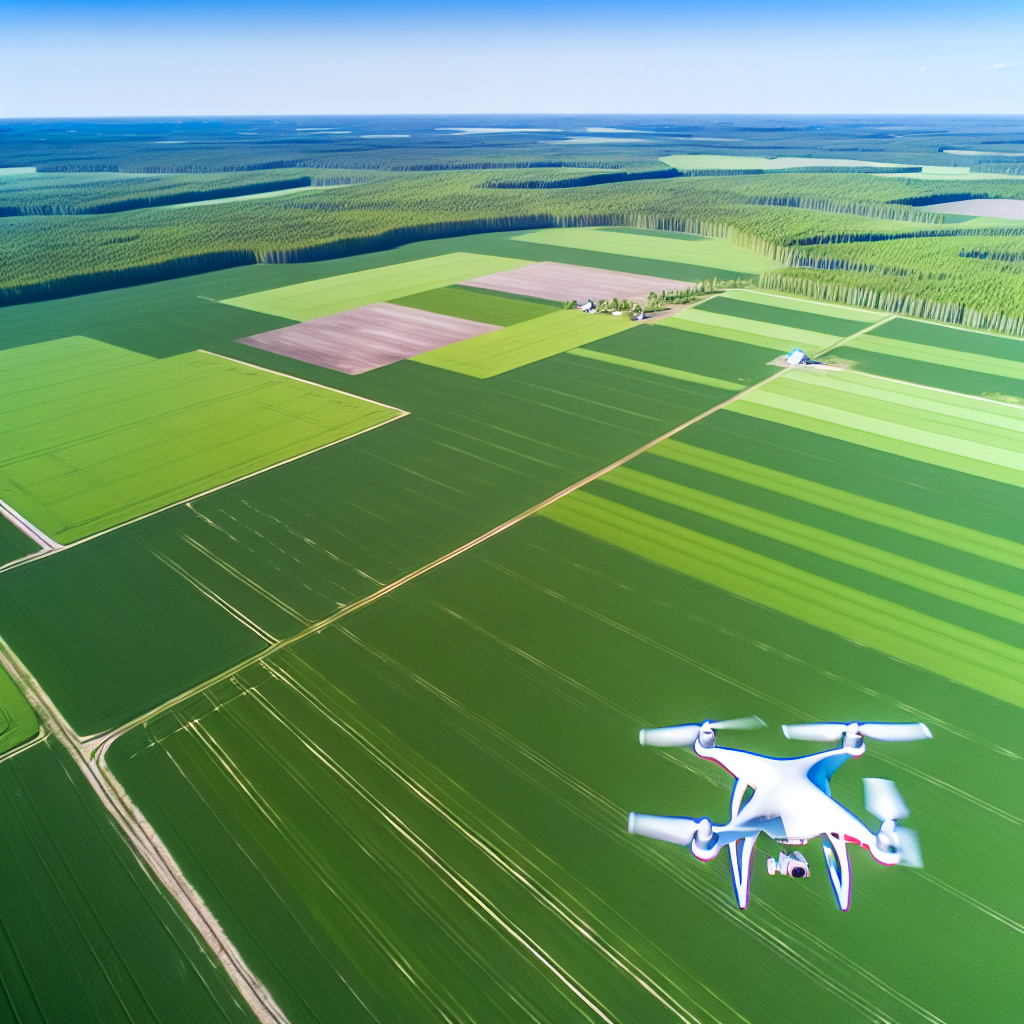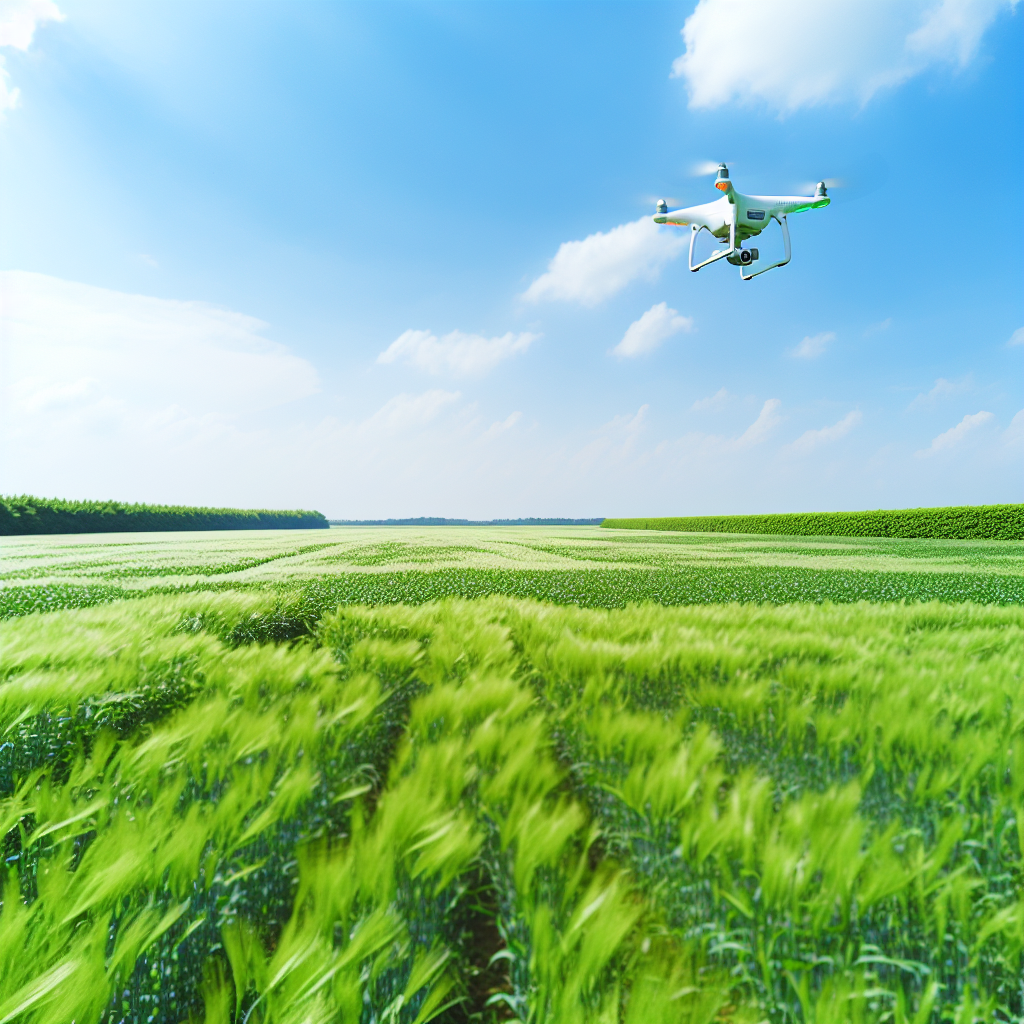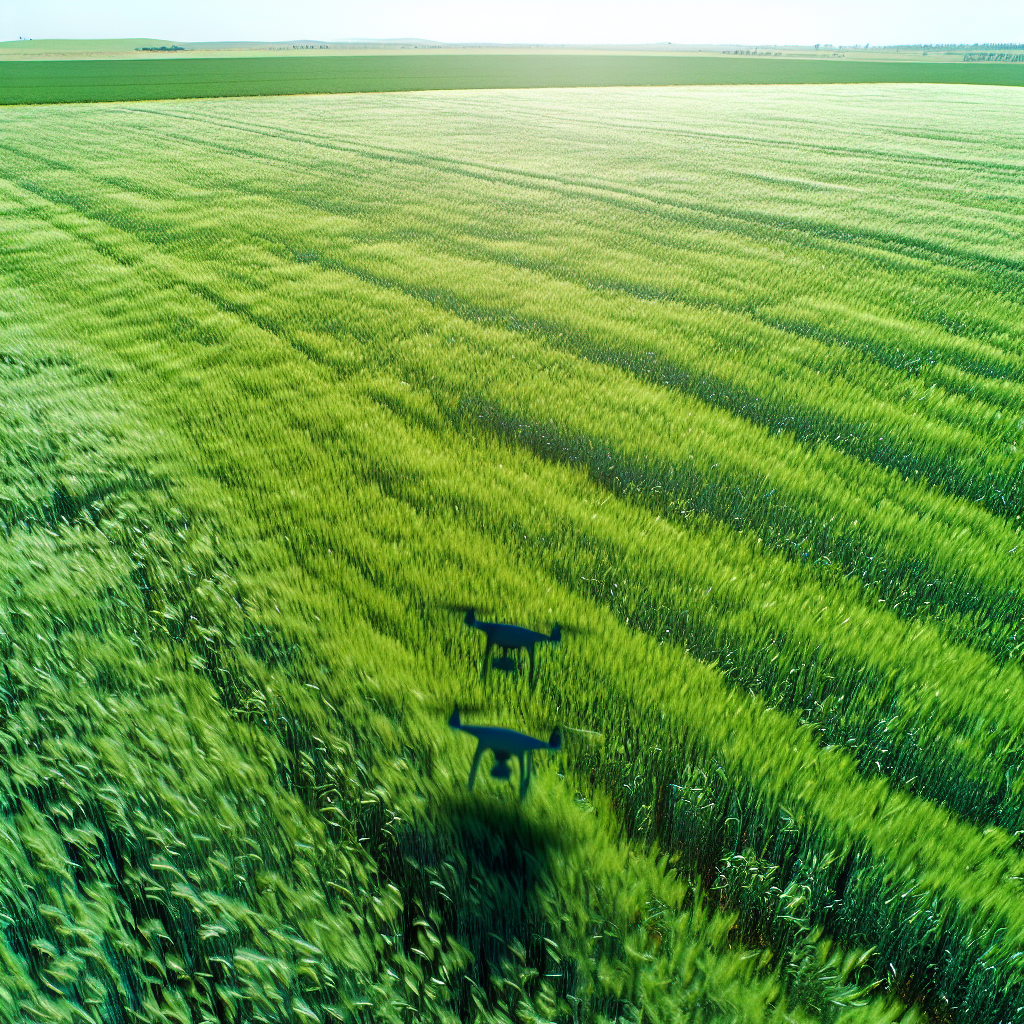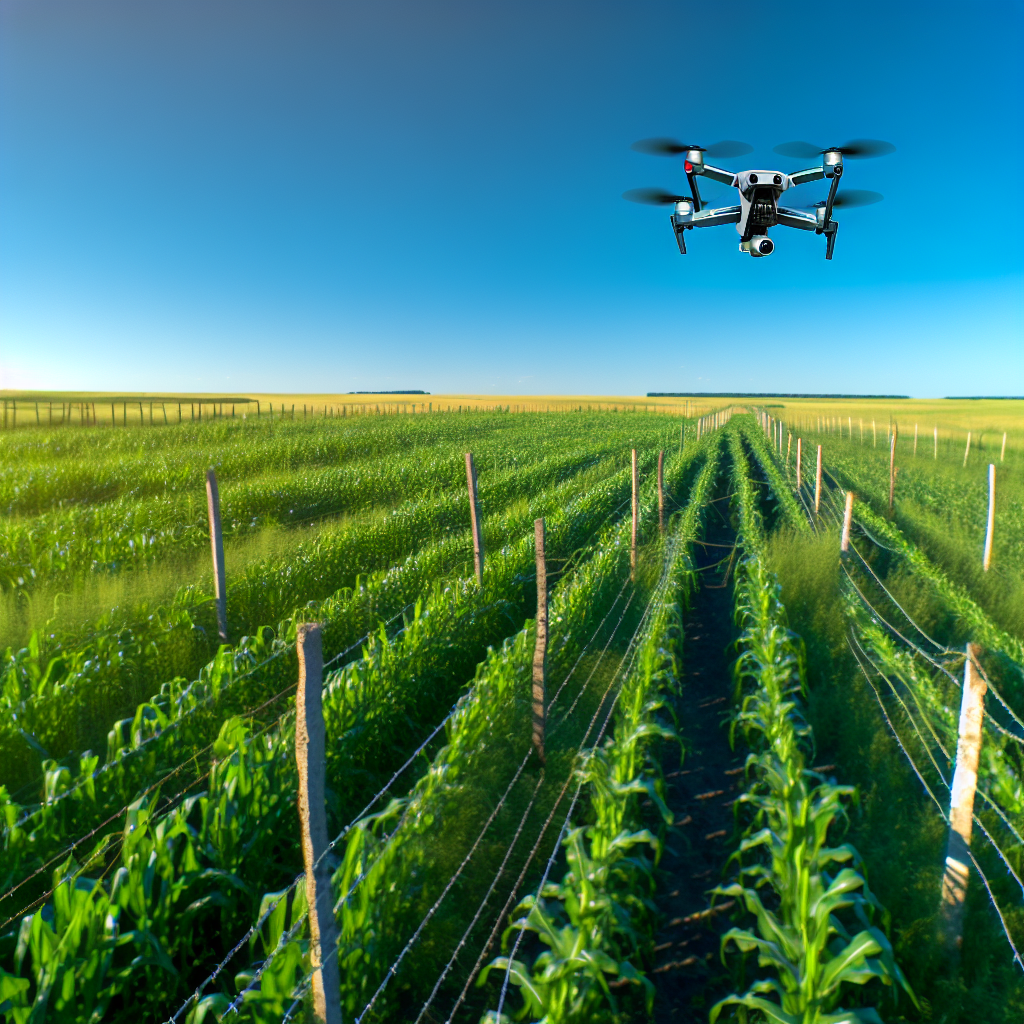Drones with remote sensing technology are revolutionizing agriculture by providing high-resolution aerial imaging for crop monitoring and precision farming. This data-driven approach allows farmers to detect issues early, optimize resource use, and improve overall productivity and sustainability in their operations.
In recent years, the use of drones in agriculture has been revolutionizing gardening practices and transforming the way crops are monitored and managed. With the help of aerial imaging and remote sensing technology, drones are providing farmers with valuable data and insights that are increasing efficiency and productivity. This article will explore the various ways in which drones are being harnessed in precision agriculture, from crop monitoring to maximizing efficiency in gardening practices. Join us as we delve into the future of agriculture and the benefits of utilizing drones for a more sustainable and productive farming industry.
- 1. "Harnessing the Power of Drones: Aerial Imaging in Precision Agriculture"
- 2. "Revolutionizing Crop Monitoring with Drones and Remote Sensing Technology"
- 3. "Maximizing Efficiency: How Drones are Transforming Gardening Practices"
- 4. "The Future of Agriculture: Exploring the Benefits of Precision Farming with Drones"
1. "Harnessing the Power of Drones: Aerial Imaging in Precision Agriculture"

Drones have become an essential tool in modern agriculture, revolutionizing the way farmers manage their crops. One of the key benefits of using drones in agriculture is their ability to capture high-resolution aerial images of fields, a process known as aerial imaging. This technology allows farmers to monitor their crops with precision and efficiency, leading to improved yields and reduced costs.
By utilizing drones for aerial imaging, farmers can easily spot areas of concern in their fields, such as pest infestations, nutrient deficiencies, or irrigation issues. This real-time data enables them to take immediate action to address these problems, ultimately leading to healthier crops and higher yields.
Furthermore, aerial imaging also plays a crucial role in precision agriculture, a farming approach that relies on technology to optimize inputs and maximize outputs. Drones equipped with remote sensing technology can collect data on crop health, soil moisture levels, and other important variables, allowing farmers to make data-driven decisions that improve overall productivity.
Overall, harnessing the power of drones for aerial imaging in precision agriculture has the potential to revolutionize gardening practices, providing farmers with the tools they need to optimize their crop management strategies and achieve greater success in their fields.
2. "Revolutionizing Crop Monitoring with Drones and Remote Sensing Technology"

One of the most significant ways in which drones are revolutionizing agriculture is through crop monitoring using remote sensing technology. Drones equipped with high-resolution cameras and sensors are able to capture detailed aerial images of crops, allowing farmers to closely monitor their fields from above.
This aerial imaging provides farmers with valuable information about the health of their crops, allowing them to detect issues such as pest infestations, nutrient deficiencies, and disease outbreaks early on. By identifying these problems sooner, farmers can take corrective action to prevent crop losses and optimize their yields.
Furthermore, the use of drones for crop monitoring enables precision agriculture practices, where farmers can make data-driven decisions based on real-time information gathered from their fields. This leads to more efficient use of resources such as water, fertilizers, and pesticides, ultimately reducing costs and minimizing environmental impact.
Overall, the integration of drones and remote sensing technology in agriculture is transforming the way farmers monitor their crops and manage their operations. By harnessing the power of aerial imaging and data analysis, farmers can make more informed decisions and improve the overall productivity and sustainability of their farming practices.
3. "Maximizing Efficiency: How Drones are Transforming Gardening Practices"

Drones are revolutionizing gardening practices by maximizing efficiency through aerial imaging, crop monitoring, and precision agriculture techniques. With the use of drones, farmers and gardeners can now easily survey large areas of land in a fraction of the time it would take using traditional methods.
Aerial imaging provided by drones allows for detailed and accurate mapping of fields, helping farmers to identify areas that may need more attention or resources. This information can be used to optimize crop production and reduce waste. Drones equipped with remote sensing technology can also provide real-time data on crop health, soil moisture levels, and pest infestations, allowing for timely interventions to be made.
Crop monitoring using drones enables farmers to track the progress of their crops throughout the growing season. By regularly surveying their fields from above, gardeners can detect issues such as nutrient deficiencies or irrigation problems early on, preventing potential crop losses. This proactive approach to farming can lead to increased productivity and higher yields.
Precision agriculture techniques, made possible by drones, allow for targeted application of resources such as water, fertilizers, and pesticides. By using drones to precisely deliver these inputs only where they are needed, farmers can reduce waste and minimize environmental impact. This level of precision in gardening practices not only improves efficiency but also contributes to sustainable farming practices.
In conclusion, drones are transforming gardening practices by maximizing efficiency through aerial imaging, crop monitoring, and precision agriculture techniques. By harnessing the power of drones and remote sensing technology, farmers and gardeners can optimize their operations, increase productivity, and ultimately, revolutionize the way we grow our food.
4. "The Future of Agriculture: Exploring the Benefits of Precision Farming with Drones"

Precision farming, also known as precision agriculture, is a farming management concept that utilizes technology to optimize crop yield and reduce waste. Drones, equipped with advanced aerial imaging capabilities, have revolutionized precision farming practices by providing farmers with real-time data on crop health, soil conditions, and pest infestations.
By utilizing drones for crop monitoring, farmers can easily identify areas of their fields that require attention, such as nutrient deficiencies or irrigation issues. This allows for targeted interventions, reducing the need for blanket applications of fertilizers or pesticides. Additionally, drones can help farmers assess the effectiveness of their farming practices, leading to more sustainable and environmentally friendly operations.
Remote sensing technology on drones enables farmers to collect high-resolution images of their fields, allowing for detailed analysis of crop health and growth patterns. This data can be used to create precise maps of the farm, identifying areas with potential for increased productivity or areas that may require remediation.
Overall, the future of agriculture is bright with the integration of drones and precision farming techniques. By harnessing the power of aerial imaging and remote sensing, farmers can optimize their operations, increase crop yields, and reduce environmental impact. Drones are truly revolutionizing the way we approach gardening and agriculture, paving the way for a more efficient and sustainable future.
In conclusion, drones have proven to be a game-changer in the field of agriculture, particularly in gardening practices. Through aerial imaging, crop monitoring, and remote sensing technology, drones have revolutionized the way farmers and gardeners approach precision agriculture. By maximizing efficiency and providing real-time data, drones are helping to optimize crop yields and minimize resource wastage. As we look towards the future of agriculture, it is clear that drones will continue to play a vital role in enhancing productivity and sustainability in the industry. Embracing this technology will not only benefit individual gardeners but also contribute to the overall advancement of the agricultural sector. With drones leading the way, the possibilities for innovation and growth in precision farming are truly endless.





